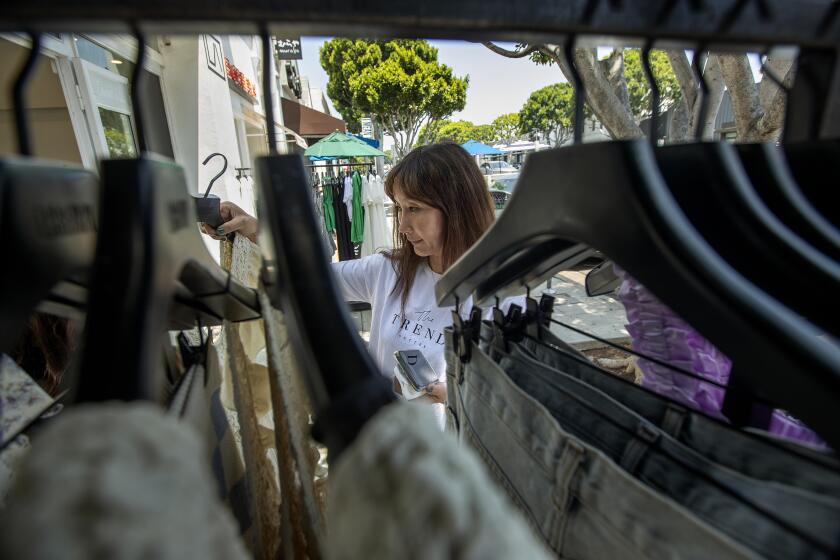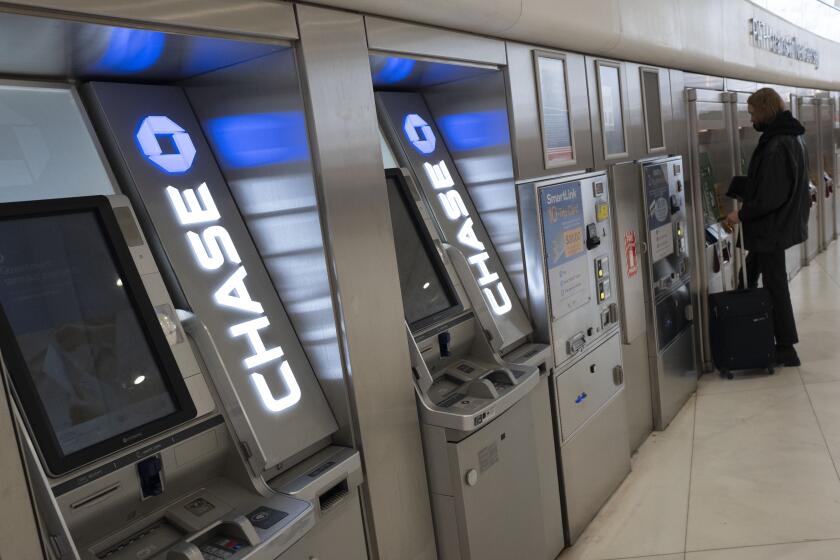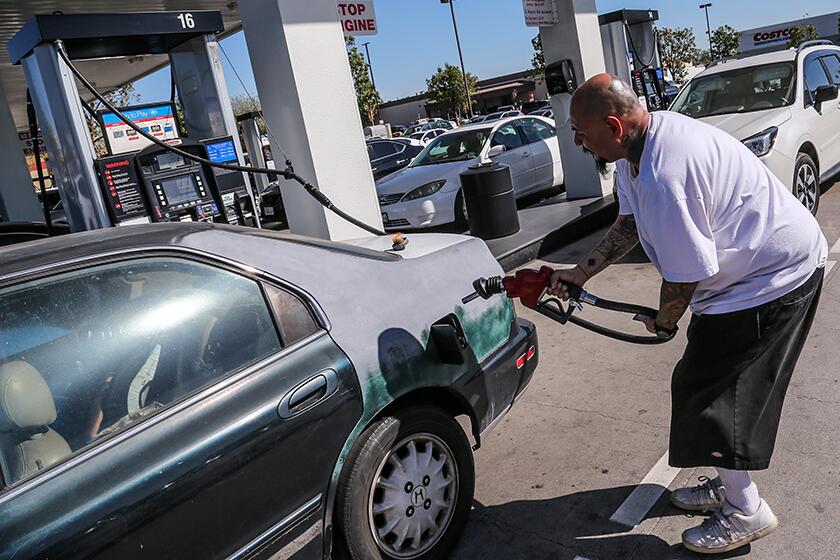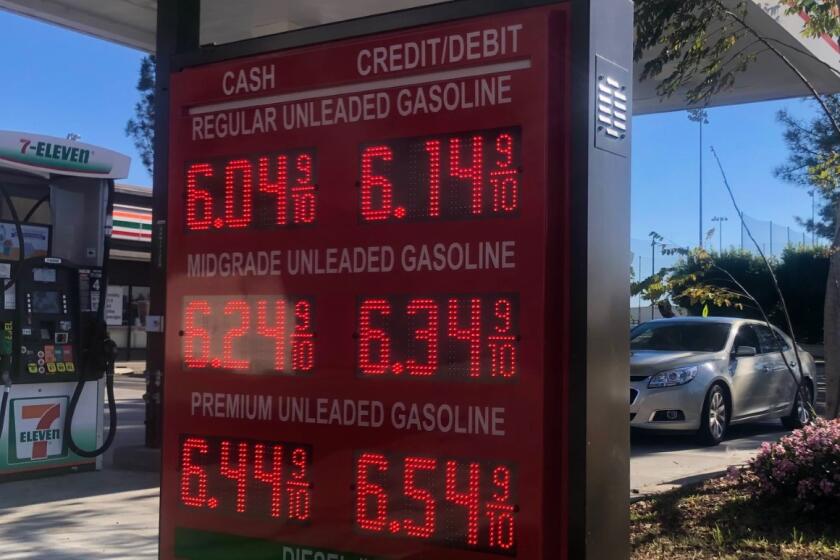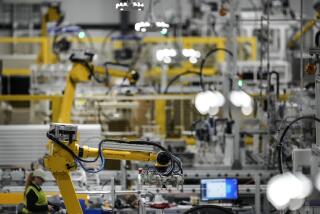Yes, a recession looks inevitable. But it may not be that bad. Here’s why
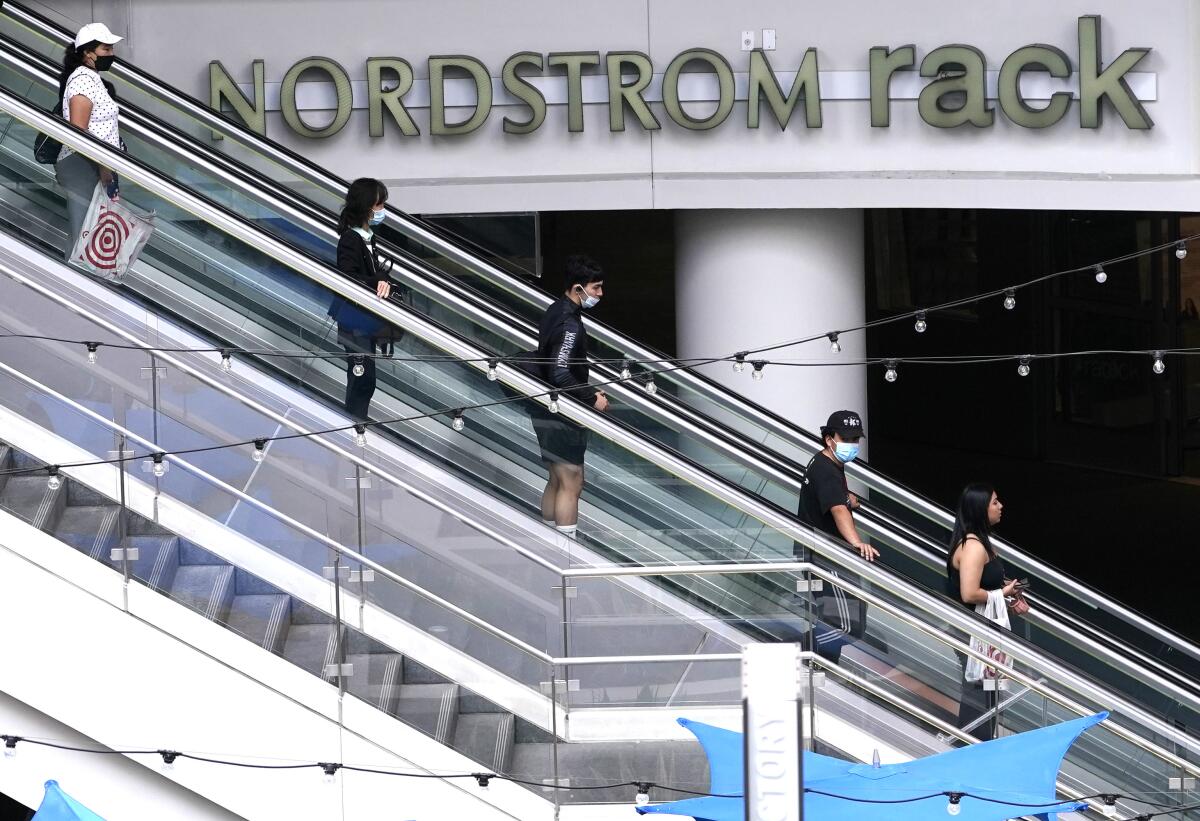
- Share via
WASHINGTON — Whether it’s President Biden insisting a recession is avoidable or his critics arguing that the wolf is at the door, both sides are acting as if the nation faces an unprecedented catastrophe.
Partly it’s political theater — Biden fighting on behalf of an already beleaguered presidency and many of the doomsayers hoping a downturn could be the coup de grace for Democrats.
Behind the rhetoric, the reality is that recessions are a normal part of American economic life. The U.S. has had one, on average, every 6½ years since 1945.
And in the present case, most professional economists think any downturn now is likely to be relatively mild, with a fairly quick recovery.
“We’re calling for a small ‘r’ recession,” said Jack Ablin, chief investment officer at Cresset Capital. “It means it’s not going to be protracted and things aren’t going to fall apart,” as they did during the Great Recession and again in 2020 when the pandemic struck.
Residents of the Los Angeles area are changing how they eat, shop and do business to cope with some of the nation’s highest gas and housing prices.
Many households are flush with cash, and jobs are plentiful with demand for new workers strong. Banks are well capitalized, which gives them a solid buffer against a business contraction.
What may be different this time is the public’s state of mind, coupled with a handful of unusual factors — first among them the grinding war in Ukraine.
For most Americans, the pandemic and its accompanying economic upheaval came after an extraordinarily long period of relative economic stability.
The economy was not growing much and real incomes were stagnating, but unemployment was low among most population groups, prices were stable, interest rates were at rock bottom and stores were flooded with low-cost goods made overseas.
Most people had adjusted to the status quo.
So the COVID-19 downturn hit like a thunderbolt, and the outbreak of inflation — driven largely by consumers suddenly beginning to spend their pandemic-induced savings — was another jolt to popular expectations.
Now, economic indicators look primed for a recession. The broad-based Standard & Poor’s 500 stock index is down more than 20% since its high Jan. 3. U.S. consumer confidence has sunk to record lows, thanks largely to high inflation. Retail spending, home-building and manufacturing output all declined last month.
And consumers, who drive the U.S. economy, are starting to cut back on discretionary purchases, things such as appliances and services.
Tom Straus, owner of Straus Carpets in Oakland, has seen a sudden drop-off in orders for new flooring jobs at homes in the San Francisco Bay Area. Typically his commercial business includes about $1 million in projects for schools during the summer; such orders so far this year total just $30,000.
“Our future work is diminishing,” he said.
Many other leaders of businesses, small and large, as well as workers, are bracing for harder times, with fears stoked by the Federal Reserve’s plans for more fat interest rate increases to combat high inflation.
Consumers already paying more for gas, groceries and everyday items should expect higher prices in other parts of their lives after the Fed rate increase.
“We’re skating on the edge of recession, especially with the Fed bringing out these big guns,” said Christopher Rupkey, chief economist at the financial market research firm Fwdbonds.
Larry Summers, Harvard economist and former Treasury secretary, notes that whenever inflation tops 4% (it was more than double that in May) and unemployment drops below 4% (it was 3.6% last month), that’s an indication of an overheating economy that in the past has always brought recession within a year or two.
Whether inflation is avoidable, the real question may be: How bad and how long will the next downturn be?
And on this score, there is greater consensus among experts that it’ll probably be nothing like the most recent episodes.
One common definition of a recession is two consecutive quarters of negative economic growth, that is, shrinking gross domestic product. But an official designation is made by a nonprofit research organization, which looks at a broad set of data and declares a recession, usually months after it’s begun.
The Great Recession that began in late 2007 lasted 18 months — the longest in 90 years — and was also one of the deepest. Millions of Americans lost their jobs and homes after the real estate bubble burst and large banking companies cratered. The unemployment rate shot up to 10%.
The pandemic-inflicted recession in 2020 was the shortest on record, just two months from peak to trough, according to the National Bureau of Economic Research. But the sudden collapse in the economy was unparalleled as businesses across the country closed and consumers sheltered in place for weeks. Some 22 million jobs evaporated between February and April that year.
The rebound since then has been fast and strong, largely because of unprecedented government aid to households and businesses. Several rounds of stimulus checks helped boost consumer spending and demand, contributing to higher inflation. Much of that money hasn’t been spent yet, which will provide a cushion for many households.
Americans overall had excess savings of $2.7 trillion in the first quarter, according to Moody’s Analytics’ calculations based on Fed and other government data. Although more than half of that was held by households in the top 10% of income, those in the bottom 20% had on average about $5,700 more cash in hand than they otherwise would have without the federal aid and the effects of the pandemic.
Those extra savings, along with historically low household debt and loan-servicing burden — many homeowners locked in low mortgage rates before the recent increases — suggest that most people are better positioned financially and could help make the next recession milder.
At Bank of America Institute, economist David Tinsley saw a noticeable uptick in BofA customers using their credit cards last month, as was the case at many banks. High gas prices, he says, are hitting lower-income families hard and also cutting into spending for goods.
The suspension could shave off 18 cents per gallon as Americans face record gas prices, but it may face an uphill battle in Congress.
But looking at BofA customers’ savings deposits and checking account balances, Tinsley said, “households continue to have high buffers relative to before the pandemic.”
For John Barone, 58, the difference between where he was on the eve of the Great Recession and today is like night and day.
In 2007, he was running his own home renovation business in Baltimore, making payments on a $1-million loan. When the housing market crashed, he laid off 20 workers and eventually lost his business, his home and his wife.
Today Barone and a business partner operate out of Washington, D.C., giving tours with their seven golf carts. His business debts are modest — $32,000 in bank loans for two electric vehicles. Barone has seven seasonal workers and lives modestly in an apartment on Capitol Hill. “I don’t have a car, don’t have to buy gas,” he said. “I go to the day-old bread shelf and buy my bread for half price.”
Barone is more sanguine than most. Nationally, small-business owners were asked last month by the National Federation of Independent Business how they see conditions over the next six months. The result was the lowest reading in 48 years.
At larger companies, a May survey of 750 top executives by the Conference Board found that more than 60% of them see a recession coming or already here. Both surveys, however, suggest employers aren’t sure what that may mean as far as employment and potential for layoffs.
Although the economy is humming, some analysts say that today’s rising inflation could trigger tomorrow’s recession. But what is a recession, and what can you do to prepare?
Many employers are still struggling to fill job vacancies and could be reluctant to let go of workers right away. The jobless rate stood at 3.6% in May, a notch above the half-century pre-pandemic low, and there are still nearly two job openings for every person officially unemployed.
New unemployment claims, a proxy for layoffs, have been edging higher in recent weeks but remain low by historical standards. Job growth in May was the slowest in 12 months, but still a robust 390,000.
“Of course we’re slowing down, but let’s remember how fast we had been growing,” said Carl Tannenbaum, chief economist at Northern Trust in Chicago.
One thing that worries Tannenbaum is the risk of knock-on effects from the Fed’s move to jack up interest rates. The pivot has already taken a big bite out of the U.S. housing market, but the tightening by the Fed and other central banks could also slam developing countries and the global economy as investors reshuffle funds. That could circle back to drag down the U.S.
Economists say the Fed misread the threat of inflation and was slow to abandon its easy-money policies, but it’s now racing to catch up and raise its benchmark interest rate aggressively to cool demand and slow growth, including in the job market.
“I think they’re seeing it like the worst of two worlds — either stagflation or recession,” said Beth Ann Bovino, chief U.S. economist at Standard & Poor’s Ratings Services. Stagflation — a condition of high inflation and stagnant activity — plagued the economy in the 1970s and ended only after the Fed raised interest rates high and drove the economy into a deep doubled-dip recession in the early 1980s.
“My belief is that in order to avoid stagflation, I think they would risk the economy and go for the recession rather than suffer stagflation for however many years,” Bovino said.
Jeffrey Korzenik, chief investment strategist at Fifth Third Bank in Tampa, Fla., said the country will avoid a recession, barely, largely because of the strength of the labor market.
He figures the Fed’s tightening will create more layoffs but said, “We have so many openings, it’ll be easier to get workers recycled into the job market. It’s not bulletproof, but it means the economy is less likely to fall off a cliff.”
More to Read
Get the L.A. Times Politics newsletter
Deeply reported insights into legislation, politics and policy from Sacramento, Washington and beyond. In your inbox three times per week.
You may occasionally receive promotional content from the Los Angeles Times.
